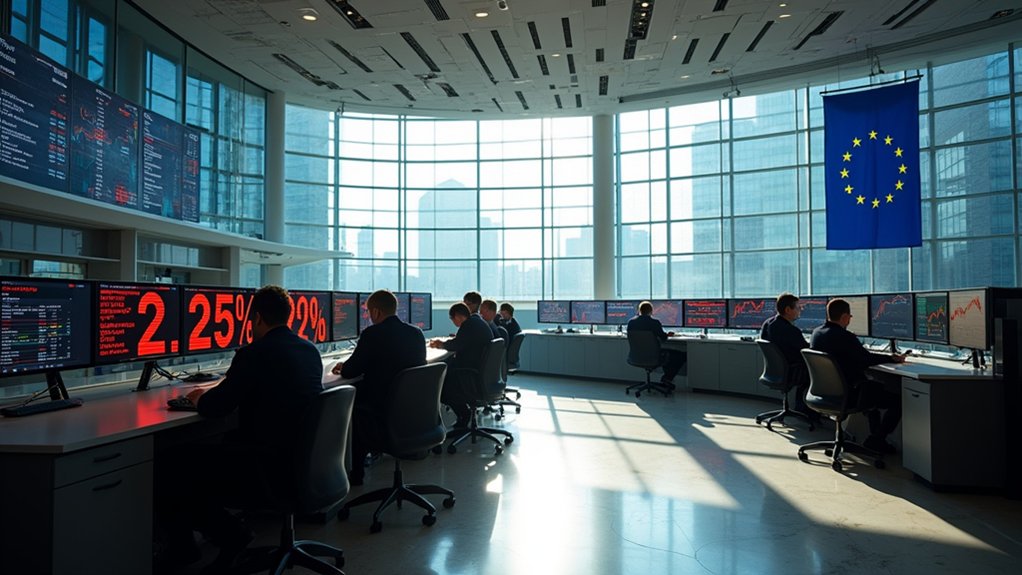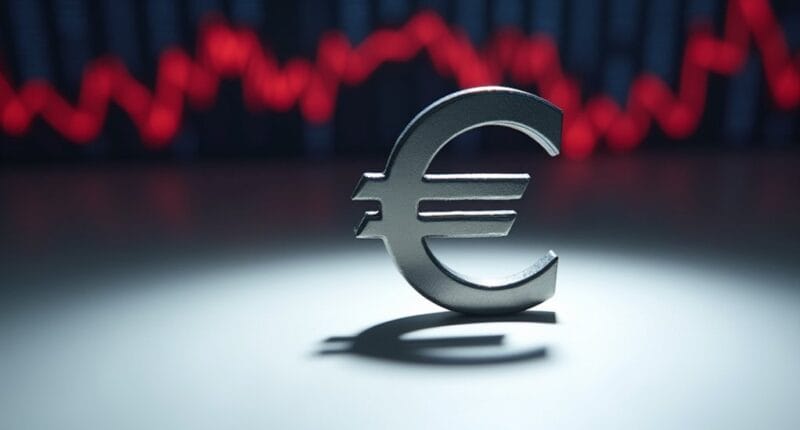The ECB slashed its key deposit rate to 2.25% on April 17, 2025, marking its sixth rate cut since June 2024. Trump’s aggressive trade policies are spooking European markets, forcing the central bank’s hand. With eurozone growth forecasts down to a measly 0.9% for 2025 and disinflation concerns mounting, the ECB isn’t messing around. Markets expect at least three more cuts by year-end, as Europe’s economic future hangs in the balance.

As trade tensions cast a shadow over the eurozone economy, the European Central Bank moved decisively to cut its key interest rates by 25 basis points on April 17, 2025. The central bank lowered its deposit facility rate to 2.25%, main refinancing operations to 2.40%, and marginal lending facility to 2.65%, effective April 23.
The ECB’s sixth rate cut since June 2024 comes as no surprise, given the eurozone’s deteriorating growth outlook. Thanks to escalating trade tensions with the US, the ECB has slashed its 2025 GDP growth forecast to a measly 0.9%. Because nothing says “economic uncertainty” quite like a trade war. The ECB’s current benchmark rate is well below its all-time high of 4.75% recorded in October 2000.
With Europe’s economy in a rut and trade wars looming, the ECB’s latest rate cut feels like déjà vu all over again.
Markets are already pricing in at least three more cuts by year-end, with expectations of a terminal deposit rate between 1.50% and 1.75%. The central bank’s decision reflects mounting concerns over disinflation, weakening consumer confidence, and falling oil prices. The ECB’s asset purchase portfolios are steadily declining as the Eurosystem halts reinvestments of maturing securities.
These policy changes demonstrate how monetary policy tools help central banks manage economic stability. Throw in some market volatility and tighter financing conditions, and you’ve got yourself a perfect storm.
The ECB insists it’s taking a “data-dependent, meeting-by-meeting” approach. Translation: They’re playing it by ear. While wage growth is moderating and inflation appears to be creeping toward the 2% target, policymakers remain wary of near-term inflation risks from tariffs and government spending.
A 90-day pause in EU-US tariff retaliation offers little comfort to jittery markets. The ECB’s message is clear: they’re ready to act if things go south. Increased uncertainty from trade tensions isn’t exactly helping financial stability, and tighter financing conditions could put the brakes on lending and investment.
The central bank’s commitment to a data-driven policy framework means one thing – they’re watching. Closely. With headline and core inflation both declining, and services inflation significantly easing in recent months, the ECB’s rate-cutting spree might not be over yet.
Europe’s economic future hangs in the balance, and the ECB is keeping its powder dry.





